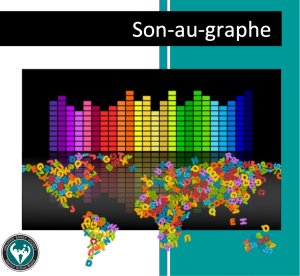Son-au-graphe is a powerful tool for teaching French structured literacy, and it has been making a significant impact in classrooms. I want to take a moment to thank Greater Essex County District School Board (GECDSB) for developing this great resource.
In this post, I’ll share how I’ve adapted Son-au-graphe lessons for home practice, breaking it down into simple, effective steps that educators can share with families. I’m also excited to announce that I’ve created free downloadable home practice pages following the UFLI (University of Florida Literacy Institute) layout. These resources are designed to make home practice easy, engaging, and impactful for students.
What Is Son-au-graphe?
Son-au-graphe is a structured literacy approach that focuses on teaching students the relationship between sounds and their written representations. It’s a systematic and explicit method that helps students develop strong reading and writing skills in French. By focusing on phonemic awareness, decoding, and spelling, Son-au-graphe ensures that students build a solid foundation for literacy success.
How to Use Son-au-graphe for Home Practice
Home practice is an essential part of reinforcing what students learn in the classroom. Here’s how I’ve structured Son-au-graphe home practice to make it simple and effective:
1. New Concept Practice
Each practice session starts with reviewing the new concept introduced in class. This could be a specific sound, letter combination, or spelling rule. Students are encouraged to read and write examples to reinforce their understanding.
2. Heart Words
Heart words are high-frequency words that students need to memorize because they don’t always follow typical phonetic rules or the concept has not been introduced yet. These words are practiced in class and revisited at home to ensure mastery. Some days may not include a heart word, but teachers can add one if needed for review.
3. Word Work
This is where students get hands-on with their learning. Using tools (i.e. magnetic letters, tiles, or a whiteboard and marker) students will practice spelling and reading words. For example, they might start with one word, change a letter to form a new word, and then read it aloud. This activity helps students understand how sounds and letters work together.
4. Sentence Practice
The final step is applying what they’ve learned in context. Students read sentences, sound out the words, and then write them down. This step emphasizes proper sentence structure, including capitalization and punctuation, while reinforcing their reading and writing skills.
Free Downloadable Resources
To make implementing Son-au-graphe at home even easier, I’ve created free downloadable homework practice pages. These resources are inspired by the UFLI home practice layout and are designed to align with the Son-au-graphe lessons.
These resources are perfect for educators looking to provide families with meaningful, easy-to-use tools for home practice.
Home practice instructions (For Parents and Educators)
- Lessons 1-10
- Lessons 11-20
- Lessons 21-30
- Lessons 31-38 Autres Phonèmes
- Lessons 39-42 Accents
- Lessons 43-45 Quelques Règles
- Lessons 46-55 Sons Vocaliques
- Lessons 56-58 Sons consonantiques
- Lessons 59-60 Autres leçons
- Lessons 61-68 Sons vocaliques nasaux
- Lessons 69-70 Autres graphèmes complexes
- Lessons 71-75 Graphèmes qui représentent des sons avec semi-consonnes
Why Home Practice Matters
Home practice is a key part of helping students solidify their learning. By practicing regularly, students can build confidence, improve their skills, and develop a deeper understanding of the concepts taught in class. With Son-Au-Graphe, home practice becomes a structured, purposeful activity that directly supports classroom instruction.
Get Started Today
If you’re an educator looking to support your students’ literacy journey, I encourage you to explore Son-au-graphe and download the free resources I’ve created. Together, we can help students build the skills they need to become confident, capable readers and writers in French.
Let’s work together to make French literacy accessible and engaging for all students!


